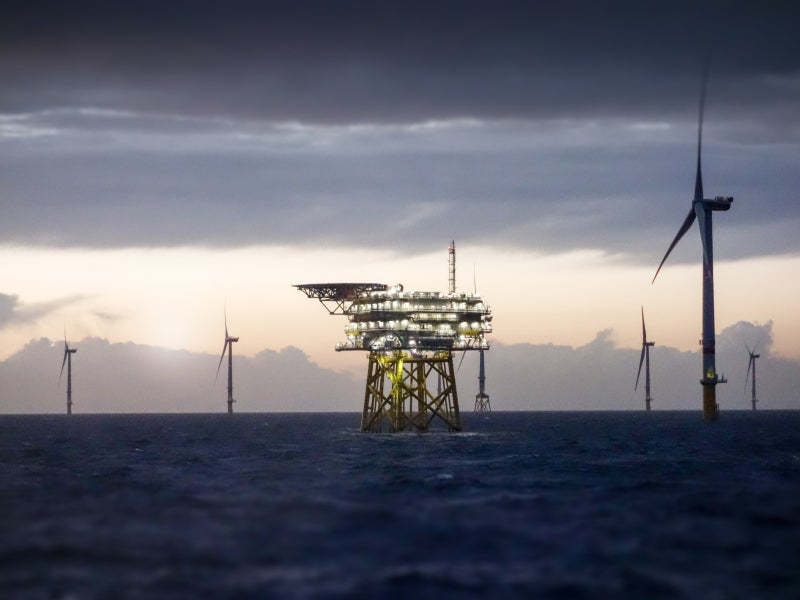
Climate change is one of the most pressing issues of our time. According to the International Energy Agency, the oil and gas industry accounts for 45% of greenhouse gas (GHG) emissions worldwide.
As the energy industry is the largest contributor to global GHG emissions, integrating renewable energy sources will be crucial in decreasing the carbon footprint of oil and gas operations in the coming decades. On the UK Continental Shelf, gas turbine-driven generators located on platforms account for approximately 70% of GHG emissions from offshore oil and gas installations.

Discover B2B Marketing That Performs
Combine business intelligence and editorial excellence to reach engaged professionals across 36 leading media platforms.
Platform electrification refers to obtaining power from either onshore or offshore renewable sources, and using them to power oil and gas facilities. One of the leaders in this sector is ABB, which is using electrification, along with improving energy efficiency and carbon capture, utilisation, and storage, to help mitigate climate change. The company’s head of oil, gas and offshore power, Johan De Villiers, talks about the company’s long-term plans.
Smruthi Nadig: What is electrification, and how can it help reduce oil and gas emissions?
Johan De Villiers: The oil and gas production process, where emissions come from one source, is an area that we need to address. That’s high-quality infrastructure for the tech team where those leads are. And then the second category is from the power generation that supplies the oil and gas production process. So that’s a major source of emissions.

What happens for offshore production assets or offshore platforms is a single-cycle gas turbine fixes it. That is a convenient way of providing power, but not efficient.

US Tariffs are shifting - will you react or anticipate?
Don’t let policy changes catch you off guard. Stay proactive with real-time data and expert analysis.
By GlobalDataWhat ABB has done is connect its production testing with shore power. So, the energy from shore is cleaner than those single-cycle gas turbines. And we have a large number of these powered from shore connections, which is a good example of using electrical equipment … and then using automation and digital solutions to manage the exchange of power.
Now it’s also possible to connect renewable energy to these production facilities. So that would be fixed or floating offshore wind. If it’s a land-based facility, it could be large-scale solar plants. We are instrumental in ensuring the integration of these intermittent sources [at] the production facility.
SN: What are electrification pathways, and what can you tell us about the subsea projects that would help your clients cut emissions by 2030?
JDV: In terms of electrification pathways, one is connecting production assets with cleaner power. [One] way in which electrification reduces emissions is what we call the launch step. So, when you have an oil and gas field, especially offshore, the points where you collect the oil or gas is further and further away from where your production process sits.
It is [crucial] to be able to place compression on the sea bed. If you provide electric power, that requires us to place transformers on the seabed and, that’s a key enabler that ABB has developed over the years.
In Australia, [at] the project Chevron, we do power from shore connection. So we have 120km of 100MW of electric power provided to the platform. And then from that platform, this last data solution with transformers on the seabed provides a very significant gain in the system’s overall efficiency. [There’s] a second benefit because of the equipment [placed] on the sub-seabed; because we don’t need the gas turbines on the platform, it is a fraction of the size that it would have been if we had the traditional approach.
As you know, steel production is one of the most carbon-intensive processes, [challenging] to attain. So anything we can do to reduce the size of the assets put out in the ocean significantly reduces the initial carbon footprint of these projects.
SN: Company report shows that ABB’s greenhouse gas emissions have been reduced by 39% from 2019 to 2021, and you plan to reduce the emissions by 80% by 2030. How do you see that happening?
JDV: It is all [about] the solutions. To maximise efficiency in digital solutions, you need to understand the efficiency with which the different parts of your production process convert energy into practical work and where the waste is. Then you can intervene with high variable speed drives, high-efficiency motors, energy management solutions that engage renewable energy, and battery storage solutions.
There’s a whole range of solutions that we can utilise to reduce the carbon footprint. There’s also the possibility of integrating renewable energy into the planet.
SN: Do you think electrification could succeed globally at a time of high demand for oil and gas? If yes, how so?
JDV: There’s high energy demand. The [most prominent] part comes from oil and gas. So you can say this is what the demand is really for energy. We see customers from every geography in the world taking the steps that are [cleaner options, like] carbon capture, carbon storage and production of hydrogen from renewable sources.
The integration of offshore wind is a [viable] solution. So you get this wonderful spectrum of solutions and activities that [aim to reduce] carbon footprint and enable the energy system of the future, which is positive.





